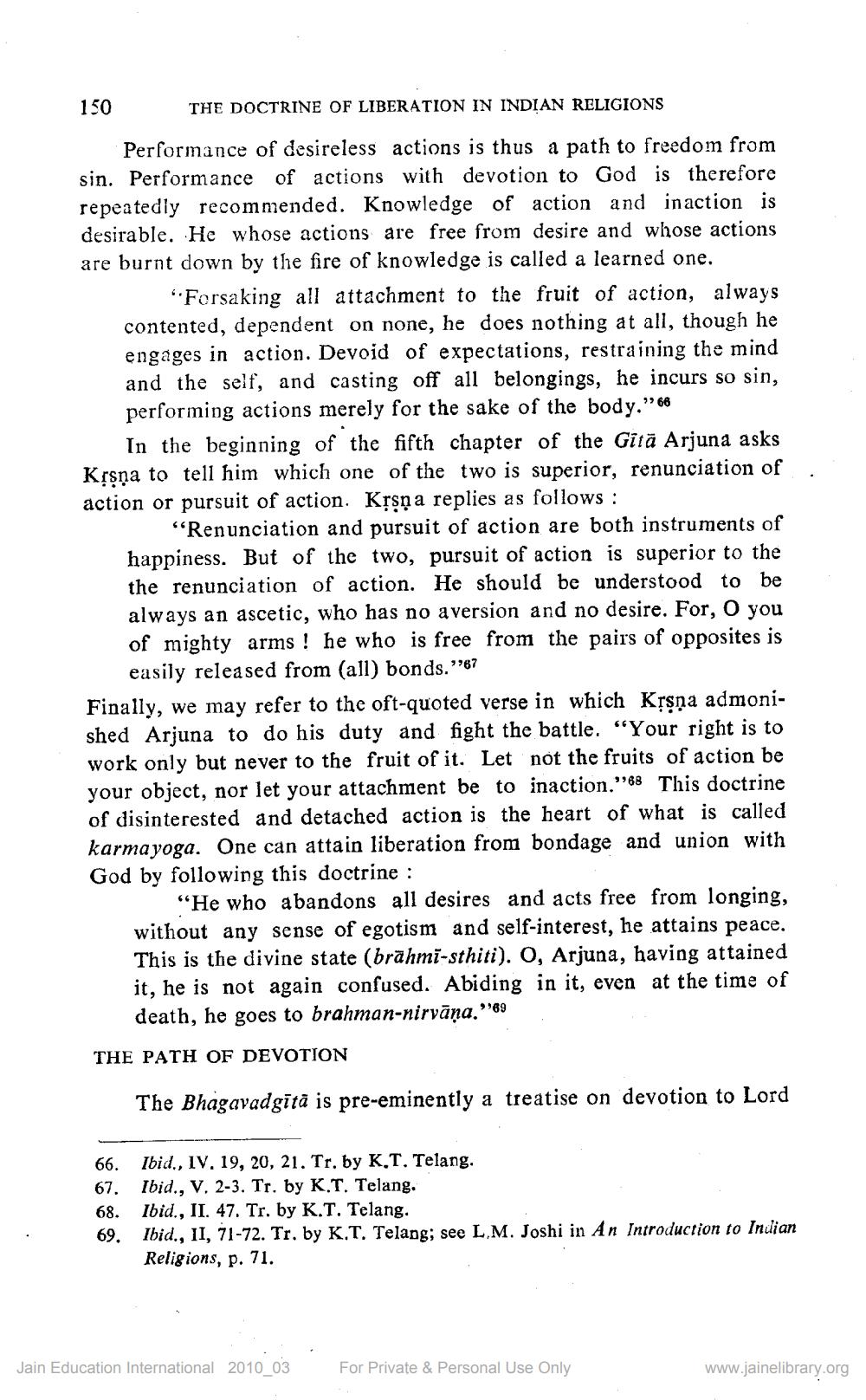________________
150
THE DOCTRINE OF LIBERATION IN INDIAN RELIGIONS
Performance of desireless actions is thus a path to freedom from sin. Performance of actions with devotion to God is therefore repeatedly recommended. Knowledge of action and in action is desirable. He whose actions are free from desire and whose actions are burnt down by the fire of knowledge is called a learned one.
"Forsaking all attachment to the fruit of action, always contented, dependent on none, he does nothing at all, though he engages in action. Devoid of expectations, restraining the mind and the self, and casting off all belongings, he incurs so sin, performing actions merely for the sake of the body." 68
In the beginning of the fifth chapter of the Gită Arjuna asks Krşņa to tell him which one of the two is superior, renunciation of . action or pursuit of action. Krsna replies as follows:
"Renunciation and pursuit of action are both instruments of happiness. But of the two, pursuit of action is superior to the the renunciation of action. He should be understood to be always an ascetic, who has no a version and no desire. For, O you of mighty arms ! he who is free from the pairs of opposites is
easily released from (all) bonds.":67 Finally, we may refer to the oft-quoted verse in which Kệşņa admonished Arjuna to do his duty and fight the battle. "Your right is to work only but never to the fruit of it. Let not the fruits of action be your object, nor let your attachment be to inaction."88 This doctrine of disinterested and detached action is the heart of what is called karmayoga. One can attain liberation from bondage and union with God by following this doctrine :
“He who abandons all desires and acts free from longing, without any sense of egotism and self-interest, he attains peace. This is the divine state (brāhmi-sthiti). O, Arjuna, having attained it, he is not again confused. Abiding in it, even at the time of
death, he goes to brahman-nirvana."69 THE PATH OF DEVOTION
The Bhagavadgitā is pre-eminently a treatise on devotion to Lord
66. 67.
68.
Ibid., IV, 19, 20, 21, Tr. by K.T. Telang. Ibid., V, 2-3. Tr. by K.T. Telang. Ibid., II. 47. Tr. by K.T. Telang. Ibid., II, 71-72. Tr. by K.T. Telang; see L.M. Joshi in An Introduction to Indian Religions, p. 71.
69.
Jain Education International 2010_03
For Private & Personal Use Only
www.jainelibrary.org




